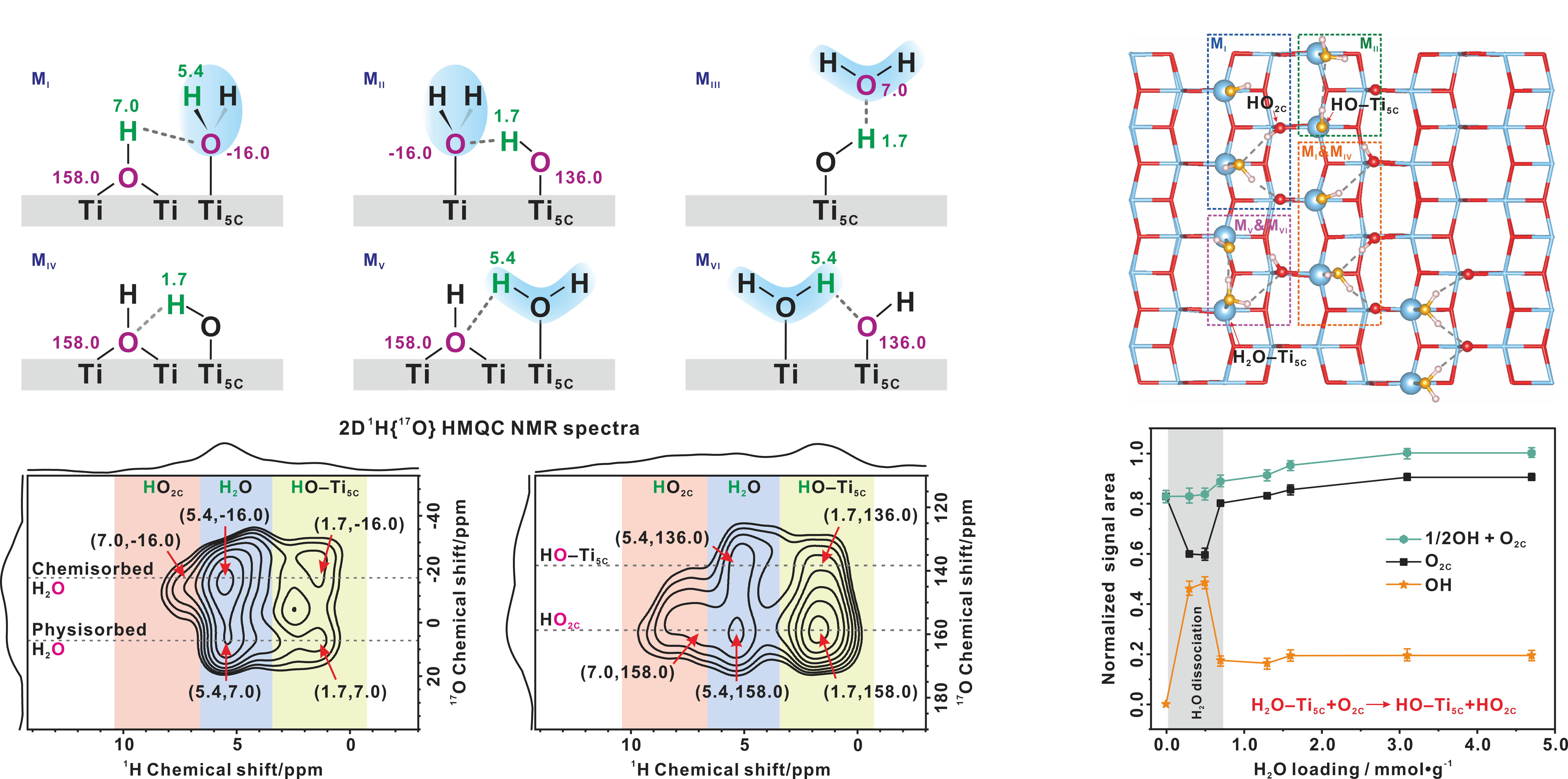Photocatalytic Reaction Mechanisms
Solid-state NMR and EPR techniques are utilized to investigate the microscopic structure of catalysts, revealing catalytic active sites and establishing structure-activity relationships. By integrating in-house developed in situ and operando methods, the aim is to achieve real-time monitoring of photocatalytic reactions. This capability enables the capture of reaction intermediates, facilitating the elucidation of the mechanisms that govern photocatalytic processes.

1. Feng, N. D.; Wang, Q.; Zheng, A. M.; Zhang, Z. F.; Fan, J.; Liu, S. B.; Amoureux, J. P.; Deng, F., Understanding the High Photocatalytic Activity of (B, Ag)-Codoped TiO2 under Solar-Light Irradiation with XPS, Solid-State NMR, and DFT Calculations, J. Am. Chem. Soc. 2013, 135, 1607-1616.
2. Liu, F.; Feng, N. D.; Wang, Q.; Xu, J.; Qi, G.; Wang, C.; Deng, F., Transfer Channel of Photoinduced Holes on a TiO2 Surface As Revealed by Solid-State Nuclear Magnetic Resonance and Electron Spin Resonance Spectroscopy. J. Am. Chem. Soc. 2017, 139, 10020-10028.
3. Feng, N. D.; Lin, H.; Song, H.; Yang, L.; Tang, D.; Deng, F.; Ye, J., Efficient and selective photocatalytic CH4 conversion to CH3OH with O2 by controlling overoxidation on TiO2. Nature Commun. 2021, 12, 4652.



